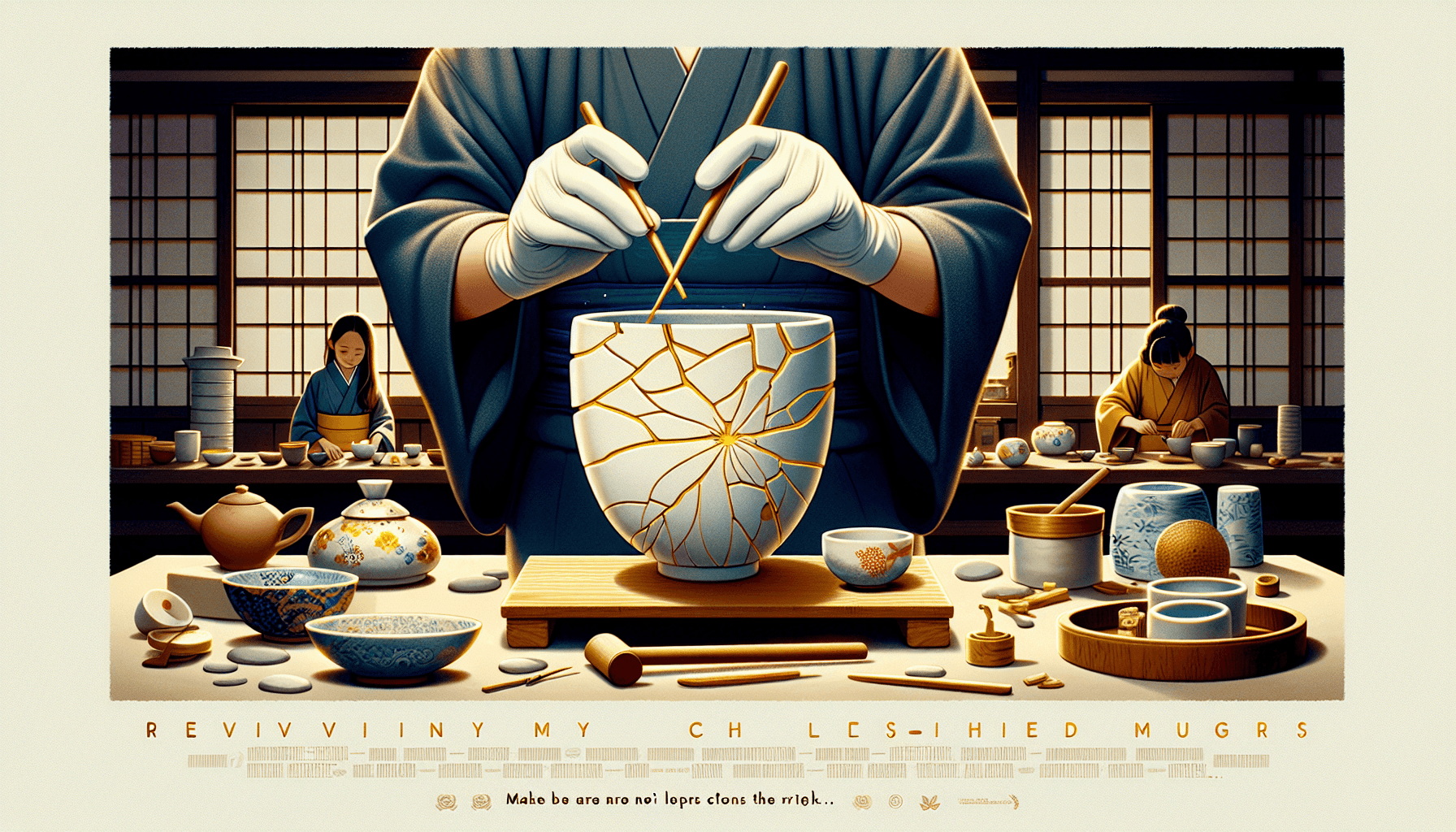Today in Edworking News we want to talk about Repairing my mug with kintsugi
My coffee mug broke earlier this year. Naturally, you wouldn't be reading this if it weren't a very special mug: It has accompanied me every day for the last 10 years. Through my student days, startup days, and early career, it has sat by my side with its goofy crocodile decals and brightened my desk. We've shared several thousand cups of coffee. That was until early February 2024. In a moment of inattentiveness, I knocked it off the kitchen counter and, giving into the idiotic reflex of trying to catch it with my foot, kicked it into the wall instead. I can still hear the sound of it shattering...
After recovering from the initial shock and collecting the sad remains of my mug, several colleagues offered their condolences and suggested I look into the ancient Japanese art of Kintsugi. I did, and four months later, my coffee mug is back in action! I wanted to write this post to share what I learned along the way.
 The Art of Kintsugi
The Art of Kintsugi
Kintsugi is the traditional Japanese art of repairing broken pottery with natural lacquer mixed with various ingredients such as wood powder, polishing compound, and even bread dough. The mended joints are then highlighted by dusting the final layer of lacquer with gold or silver. In Western philosophy, broken objects are often discarded or repaired to look as good as new. However, in traditional Japanese philosophy, an object’s imperfections are to be celebrated as they tell the story of its history.
 Step-by-Step Repair Process
Step-by-Step Repair Process
Step 1: Gluing Pieces Together with Mugi Urushi
- I started the process by cleaning and smoothing the edges of the broken pieces of my mug.
- I rebuilt the mug using masking tape to align the pieces.
- Used mugi urushi glue made from cake flour and raw urushi.
The glued pieces were placed in a warm and humid cardboard box to harden for about two weeks.

 Overcoming Challenges
Overcoming Challenges
The guides I followed worked with clay pottery, while my mug is glazed ceramic. Sanding ceramic surfaces isn't easy. I used 200-grit sandpaper but a diamond file might have been a better tool. The mugi urushi glue-up was slightly crooked, resulting in misalignment, which I accepted as part of the learning process.
Step 2: Filling Gaps with Kokuso and Sabi Urushi
- Larger gaps were filled with kokuso (mugi urushi mixed with wood dust and polishing compound).
Small holes and cracks were filled with sabi urushi (polishing compound and urushi).

- Image: Filling gaps with kokuso and sabi urushi.

 Applying Lacquer
Applying Lacquer
Step 3: Black Urushi Lacquer
Once gaps were filled and cracks smoothed, I began applying layers of black urushi lacquer using a fine-tip paintbrush. This step was surprisingly challenging, especially because of the lack of my painting skills.
Step 4: Gold Dust on Bengal Red Urushi
The final layer involved applying bengal red urushi followed by the delicate task of brushing on fine gold powder.
 Lessons and Reflections
Lessons and Reflections
After several months of diligent work, mixing, painting, and waiting for the urushi to cure, my mug was finally repaired. While the result isn't perfect, I'm grateful for the experience and thrilled to have my mug back. This journey taught me about the celebration of imperfections and patience, which parallels the growth of a startup.

 Promotional Content
Promotional Content
Edworking is the best and smartest decision for SMEs and startups to be more productive. Edworking is a FREE super app of productivity that includes all you need for work powered by AI in the same super app, connecting Task Management, Docs, Chat, Videocall, and File Management. Save money today by not paying for Slack, Trello, Dropbox, Zoom, and Notion.
 Key Points
Key Points
Remember these 3 key ideas for your startup:
- Celebrate Imperfections and Learn from Them: Just like the philosophy of Kintsugi, embrace the imperfections and challenges your startup faces. These imperfections tell your journey's story.
- Invest in Proper Tools and Training: The importance of the right tools, as learned during the sanding process, can't be overstated. Consider using top collaboration tools to enhance productivity.
- Patience and Persistence: The meticulous process of repairing my mug taught me that patience and persistence are key. These qualities are equally vital in the growth and success of a startup. For guidance, check out tips on overcoming startup challenges from the Founder Institute.
Learn more about Kintsugi on Wikipedia
For more details, see the original source.






